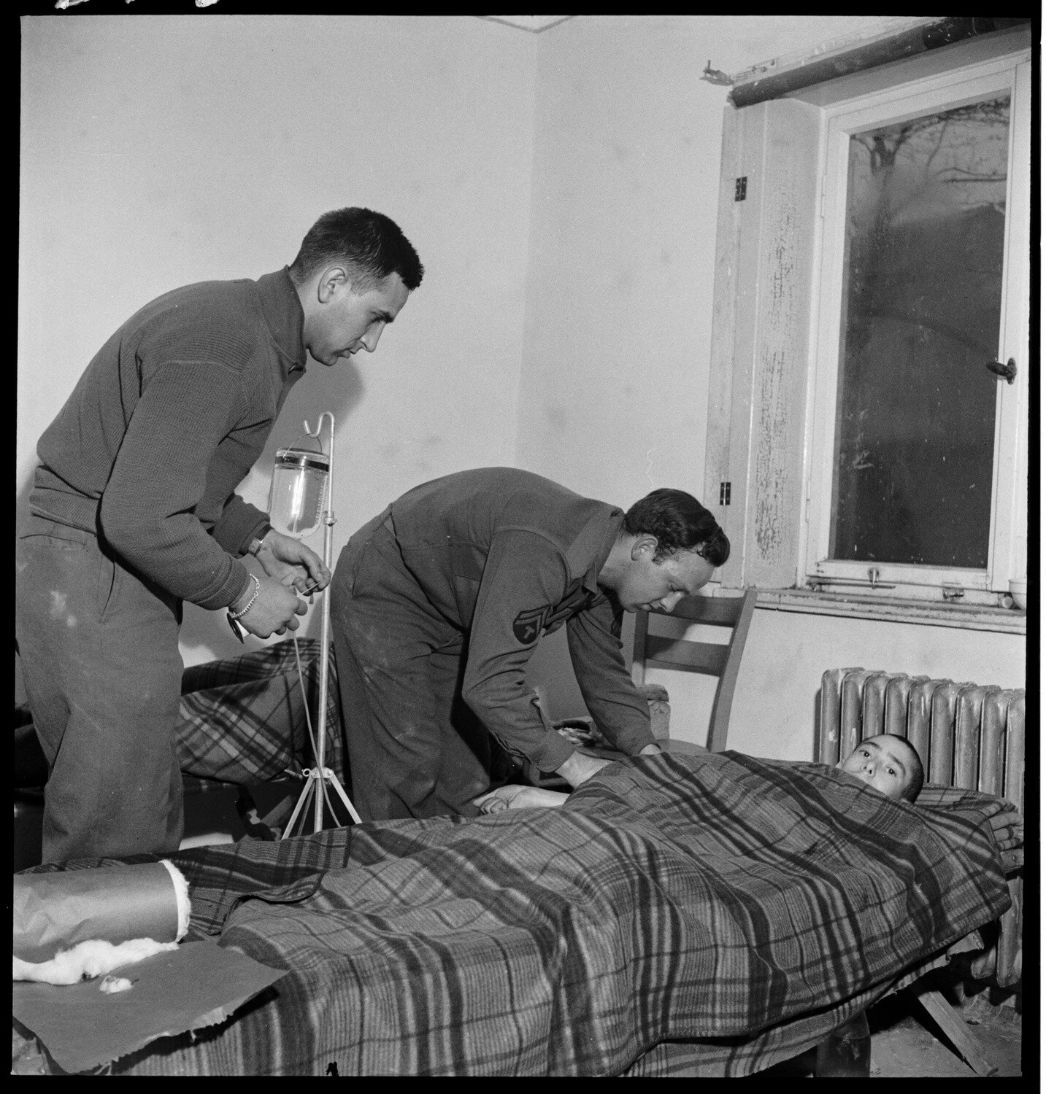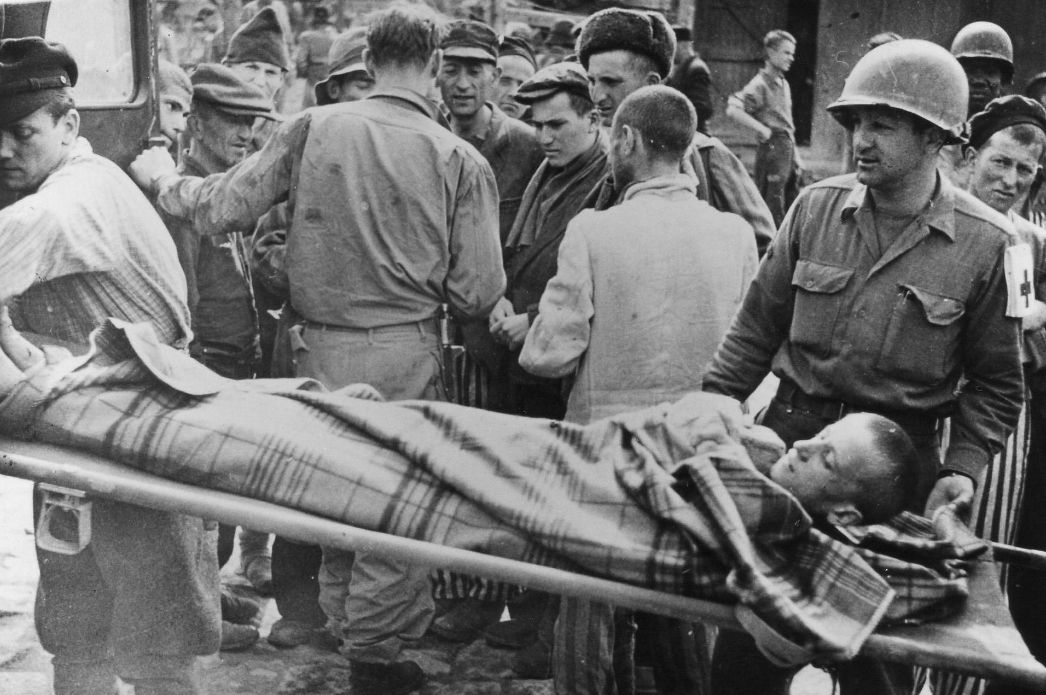
American military doctors and orderlies struggled for weeks to save the former inmates’ lives. They were deeply shocked by what they saw in Buchenwald. One of them was Robert Roberts from Arden, Delaware, twenty-six years old at the time.
He later recalled:
“The Buchenwald scene was almost beyond belief and a horror to behold. To think that man could be so inhumane was difficult to come to terms with. To look at these walking, skin covered skeletons was pitiful. To see dead humans’ emaciated bodies stacked in piles was a horrific sight. The filth and stench were overwhelming to the point of being sickening … .
Buchenwald was our last action site and easily rated as the most horrific experience of the war for me and has left an everlasting impression, impossible to erase from my mind, even with time. I was glad that I was able, in my small way, to assist these people, who had been unjustly tortured beyond anyone’s comprehension.”[1]
One of the commemorative plaques mounted this year is dedicated to the arrival of the American soldiers on 11 April 1945 and their work in the days and weeks after the liberation.
[1] Robert Roberts, A Medic’s story. An autobiography of experiences during World War II, Bloomington 2002, P. 92 und P. 103 (Übersetzung ML)


